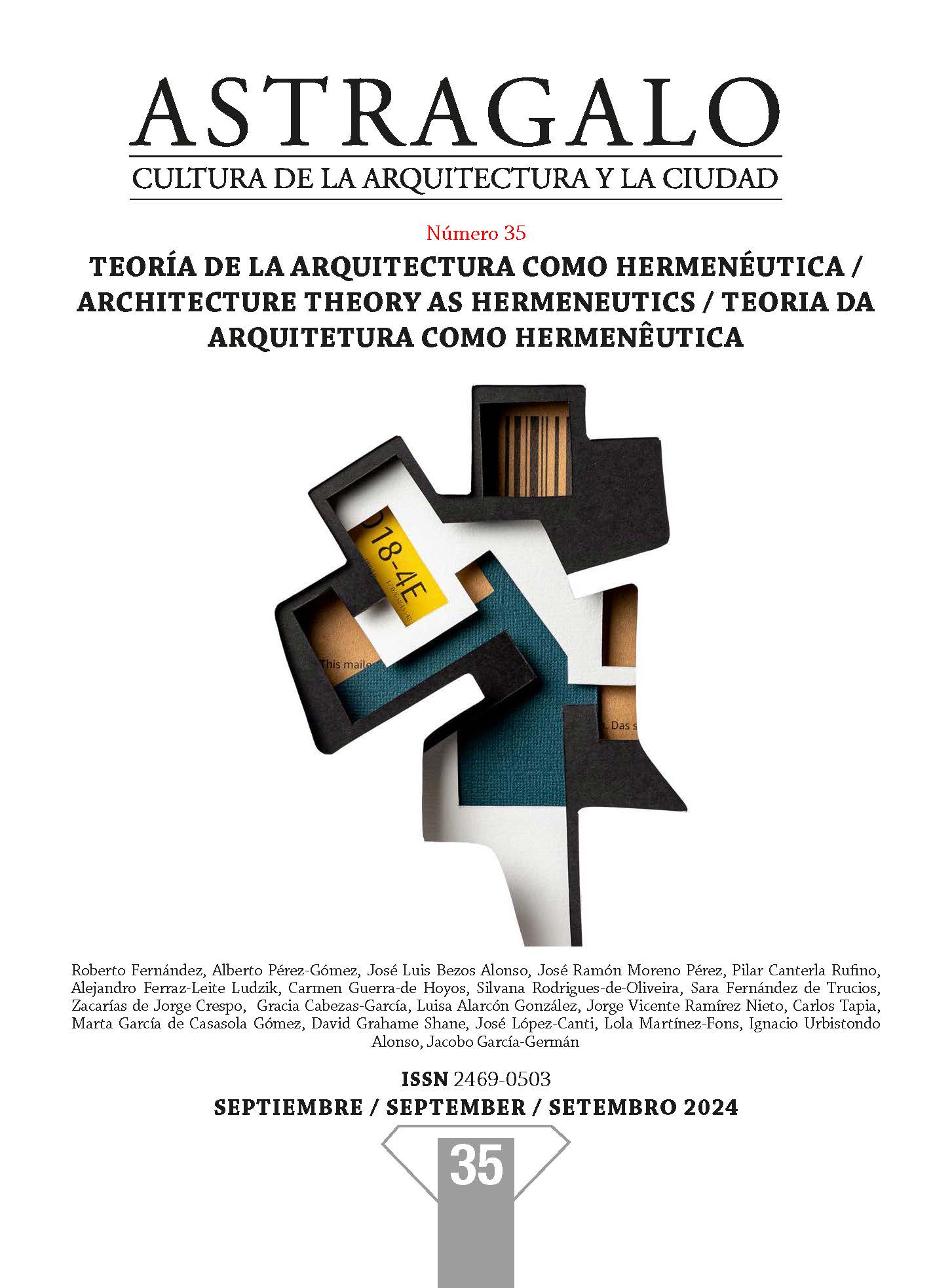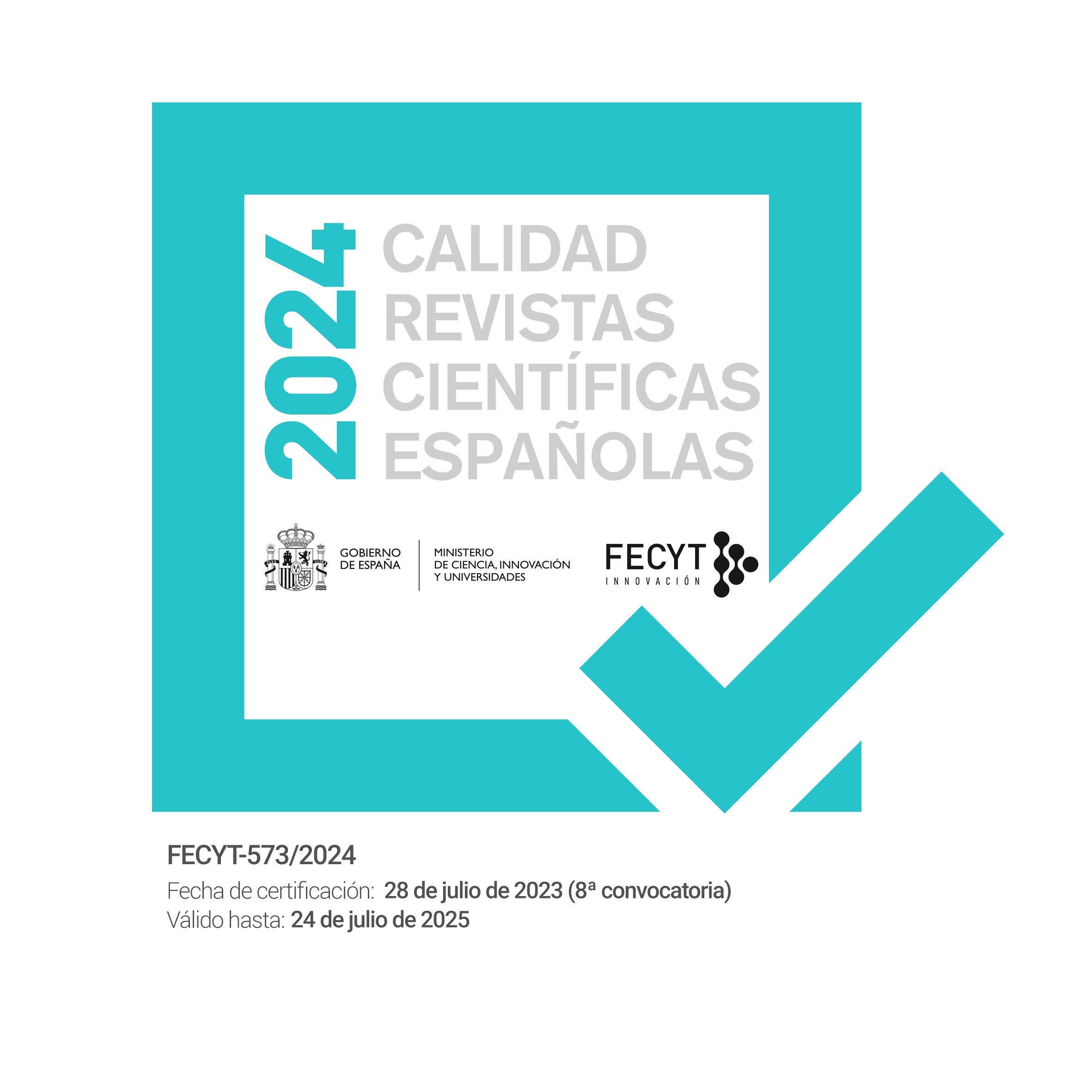Vol. 1 No. 35 (2024): Theory of Architecture as Hermeneutics

The subject of architecture is not merely aesthetic or technical, if by that we mean autonomous values, as configured in the Western mentality from the 18th century onwards. Rather, it is primarily ethical. The practice of architecture must be guided by a notion of the common good, while retaining a political dimension, understood as the human quest for stability and self-understanding in a changing and finite world. It is about proposing spaces for embodied communication which, by seducing us, promote justice, consequently indispensable for our psychosomatic health. Instrumental theories are unable to account for this dimension, regardless of whether they are driven by technological, political or formal imperatives, or by the desire to emulate some scientific model (for example, recently, bio-mimicry). The alternative that theory can provide for an ethical practice can be found in recent hermeneutic ontology, particularly in the works of Hans-Georg Gadamer, Paul Ricoeur and Gianni Vattimo. I propose the theory of architecture as hermeneutics, understanding language as an emergent phenomenon, in continuity with embodied consciousness, taking up the ontological intuitions present in the late work of Maurice Merleau-Ponty.
Unlike some scientific or deconstructivist methodology, hermeneutics allows us a critical openness to the self-evident qualities of historical artefacts, leading us to recognise and value the responses produced in historical contexts that we identify as meaningful orders. The same mindset suggests a careful and courteous reading of historical documents - the architectural theories of times past, for example - conceding that important questions about the meaning of the discipline underlie the discourse, beyond the limitations imposed by local beliefs, prejudices and power games. The world of our experience includes the artefacts that constitute our artistic traditions, including architecture: spatio-temporal forms whose transformative power we can still discern, in moments of recognition that are entirely new, yet strangely familiar. By understanding these forms of specific embodiment and articulating their lessons in view of our own tasks, we will have a better chance of constructing an appropriate architecture and an intersubjective reality that can fulfil its social and political task as an affirmation of culture. The task of architecture is the formal manifestation of a social and political order out of the chaos of experience, starting with the perceptions of meaning that our culture shares in its habits and embodies in its historical vestiges, projecting poetic alternatives that can transcend the stifling or repressive frameworks of inherited institutions.
Authors are invited to submit articles that reflect on this, taking into account the text that Professor Alberto Pérez-Gómez, guest editor, has prepared to set guidelines or incite responses. We expect elaborate interpretations of buildings or urban proposals, historical reviews of the contexts mentioned therein, current affairs or criticism of what we have wanted to be the object of research, for the monograph that will be called the theory of architecture as hermeneutics.
Guest editor: Alberto Pérez-Gómez. McGill University, Montreal.
DOSSIER (A35): THE LEGACIES OF COLIN ROWE; MATHEMATICS, CONTEXTUALISM, COLLAGE CITY AND BEYOND.
Guess Editor: David Grahame Shane
Colin Rowe transformed and changed over his lifetime, constructing and refining his intellectual and conceptual apparatus in response to his changing circumstances. There can be little doubt that the single most formative experience of the young Rowe was his time with Rudolf Wittkower at the Warburg Institute, after his earlier architectural education at Liverpool University, whose Professor Patrick Abercrombie guided the re-building of London after WW II. Rowe attempted unsuccessfully to adapt Wittkower’s diagrammatic analyses to Le Corbusier’s St Dié with his students Robert Maxwell and James Stirling. Later with the Texas Rangers he began to unpack the Wittkoverian geometry into the urban landscape, studying Le Corbusier’s League of Nations with his colleagues Robert Slutsky, Bernard Hoesli and John Hedjuk. He continued this process to recoup the traditional, classical city via Camillo Sitte in the 1950s with Alvin Boyarsky at Cornell, and then in the mid-1960s with Wayne Copper and Tom Schumaker. From this hybrid base, Rowe constructed a new, meta-historical, reflexive, curatorial apparatus of the “city as museum” outlined in Collage City with Fred Koetter and the Roma Interrotta Team (1978). As argued in Recombinant Urbanism (2005) many of the subsequent Urban Design movements unfolded from this layered, diagrammatic, multi-scalar approach to communal history, memory and the environment in the following half-century ranging from the Neo-Rationalism, De-construction, New Urbanism, Parametric Urbanism, Landscape Urbanism, Ecological Urbanism, Strategic Urbanism, to the emphasis on Historic Preservation, Adaptive re-use, the self-built megacity and the informational city. Even in Covid Urban Designers still struggle with the complexity and contradictions of classical and modern continuities that made Rowe’s intellectual struggle so difficult and dynamic.
It seems an appropriate time to revisit Contextualism and Collage City and Roma Interrotta within the framework of contemporary urban design networks, and the new tools of representation available in the contemporary metacity of information.
In this sense, authors are invited, from among other related instances, to focus on Contextualism, Collage City and beyond, to investigate Colin Rowe’s mid-twentieth century role in appropriating Sitte’s 1890’s reaction to Von Forster’s 1860 imperial design for the Vienna Ringstrasse. Rowe’s critical appropriation paved the way for later iterations and code shifts that greatly expanded into a more fragmented, inclusive Collage City. It took Rowe several iterations to develop this concept with Fred Koetter and with his Roma Interrotta team. Moreover, authors are called to explore strength and weaknesses of the mutations of Rowe’s classical impulse as it, in its turn, evolved with urban design beyond the binary into the 21st century.













